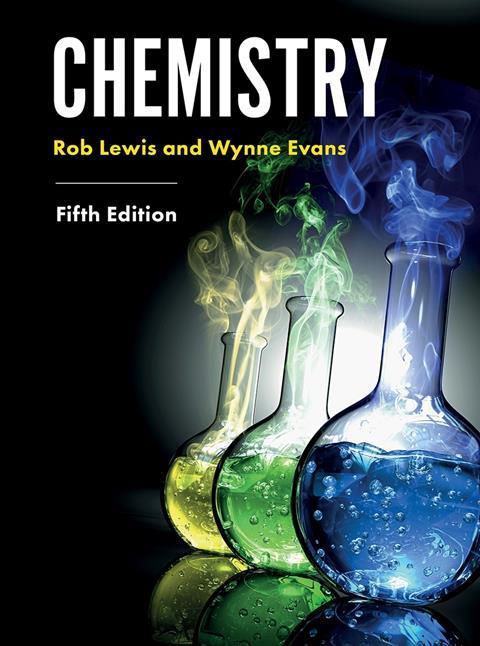An updated 16–18+ textbook with welcome additions
Rob Lewis and Wynne Evans
Palgrave
2018 | 508pp | £27.99 (PB)
ISBN 9781137610355
Reviewed by Ursula Lowe
amzn.to/2KMmr7x
Rob Lewis and Wynne Evans
Palgrave
2018 | 508pp | £27.99 (PB)
ISBN 9781137610355

As the owner of a first and third edition of this popular, full-colour textbook, I was keen to read this recent update. It begins by building students’ knowledge of maths and SI units and has a useful glossary and index.
The book covers the development of chemical history and core topics such as states of matter, atomic structure, chemical bonding and redox. Inorganic chemistry chapters cover groups 1, 2, 14, 17 and 18 as well as 3d transition elements. Physical chemistry has the usual chapters on energy changes, rates of reaction chemical and acid-base equilibria.
The chapter on Gibbs energy changes is a welcome addition to the book – pertinent to deeper chemistry studies and a recommended read for any biochemistry student learning about metabolism. The coverage of organic functional group chemistry is broad. The new chapter on organic mechanisms can be used to challenge more able students while also supporting undergraduates. I particularly like the chapters associated with practical work and calculations – moles, reactions of ions, solubility, separation techniques and spectroscopy.
The content has been updated to include more recent method developments eg the chemistry WebBook on the American National Institute of Standards and Technology (NIST) website and useful physical constants. The case studies on forensic science, medicines, the environment and radioactivity have enough appeal to hook students’ attention. The new chapter ‘fire and flame’ brings combustion alive and uses many case studies to demonstrate chemical applications.
I feel some of the case studies are dated – eg the 1987 King’s Cross fire – as are some of the images of employees at work. Qualitative analysis may benefit from including a flow chart for the systematic analysis of cations and anions to further develop decision making skills. The online materials were unavailable at the time of writing.
This textbook continues to provide students with a clear and concise introduction to chemistry and has a companion website that will provide further study material and links to videos. I certainly recommend this good value, multi-purpose book for access to higher education, BTEC and A-level equivalent courses. The chemistry is thorough – a good teacher can always add additional material to support students.
Purchase Chemistry from Amazon.co.uk









No comments yet